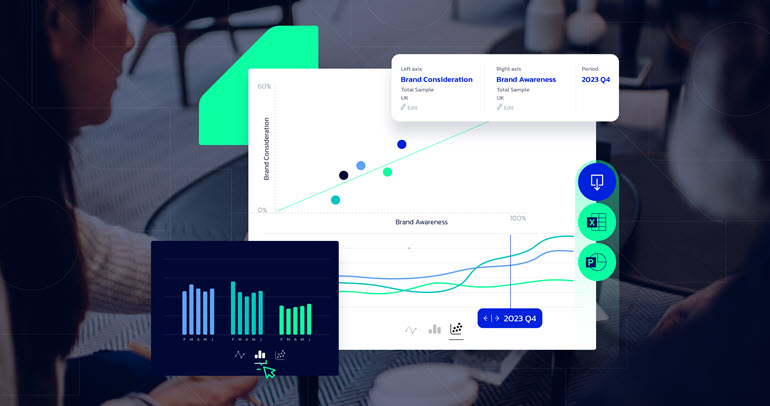
How Financial Institutions Can Appeal to Emotional Motivations
All types of financial institutions are rapidly jockeying to determine how they can best capitalize on one of the largest, most historical opportunities to face the industry—which has already begun. Over the next two decades, $90 trillion in assets is expected to be inherited,1 the largest transfer of wealth from one generation to another. As these financial institutions race to get positioned to capture and manage these investable assets, they need to understand how they can differentiate themselves to secure a competitive advantage.
Considering that many of the features and benefits of financial products are similar from one competitor to the next due to government regulations and market factors (such as interest rates), and the fact that people buy on emotion and then support their decisions rationally,2 winning these newly transferred assets requires firms to connect with the emotional motivations of these future inheritors.
To help financial institutions connect with what drives affluent investors, Cogent Syndicated has identified four Motivational Segments among affluent investors that help identify an individual investor’s motivations for investing. In our new Trajectory of Intergenerational Wealth Transfer report, we dug even deeper into these Motivational Segments and have identified what motivates each segment’s investment decision-making, the percentage of affluent investors in each segment who expect to inherit money, what types of financial products and financial institutions they are likely to invest with and why, how much money they plan to invest in each, and how best to target each Motivational Segment using marketing touchpoints.
Introducing the Motivational Segments
Based on our Cogent Beat™ Investor monthly survey of 2,000 affluent investors (defined as investors with $100K+ in investable assets), in Q4 2023 we found that 28% of affluent investors expect to receive inheritance money within the next 10 years. To capitalize on this market opportunity, financial institutions will benefit from understanding how the following four different Motivational Segments differ in their motivations for investing:
- Financial Achievers
- Leisure Seekers
- Legacy Leavers
- Cautious Givers

In addition to the fact that people make decisions emotionally and then support those decisions rationally, a major premise for doing this type of emotional segmentation is that people in the same demographic or behavioral group can differ dramatically in what motivates them to do what they do.
As well, Behavioral Science (BeSci) recognizes that people do not always know why they do what they do because decisions are made in the unconscious mind.3 From a BeSci perspective, three of these segments (Financial Achievers, Leisure Seekers, and Legacy Leavers) have what is known as a Promotion Orientation, meaning they tend to be motivated toward what they want. The fourth segment (Cautious Givers) is Protection Oriented, meaning they tend to be motivated away from what they don’t want.
To identify which Motivational Segment an investor falls into, respondents were asked to rate how well several statements describe their emotional motivations (needs and barriers) for investing. These responses were then analyzed using a proprietary method to score each respondent on six unique investment motivational factors (we refer to these scores as “Factor Scores”):
- Achieve financial security
- Control
- Fear of making impulse decisions
- Family legacy
- Charity
- Self indulgence
Each Motivational Segment includes affluent investors who score similarly within the segment but differently from other segments on emotional investment decision-making factors, which we’ll dive into next.
Defining the Motivational Segments
Financial Achievers are emotionally motivated to achieve financial security and gain control of their assets. Financial institutions can appeal to Financial Achievers by helping them feel supported in growing their assets to achieve certain things they want both in life and for their loved ones; achieve a high standing and prestige in society; feel strong and in control of their lives; be able to do things others can’t.

Leisure Seekers are motivated in their investment decisions primarily by self-indulgence. Although they are also motivated to achieve financial security. Financial institutions can appeal to Leisure Seekers by acknowledging their emotional need to use their investment earnings on vacations/get-aways to indulge in relaxing and refreshing activities such as relaxing, recharging, seeing beautiful places, and having fulfilling adventures.

Legacy Leavers are primarily motivated by charity and are the only segment strongly motivated to leave a family financial legacy. Financial institutions can appeal to Legacy Leavers by positioning their firm as the best at helping these investors leave a part of their asset growth to charitable causes they care about, helping other people achieve things for the community, nation or world, and especially by appealing to their desire to leave an inheritance for their children and/or grandchildren.

Cautious Givers are primarily motivated by charity for others besides family, with hardly any motivation to leave a family legacy. Cautious Givers are also motivated to feel strong and in control of their lives, but unlike Financial Achievers, are not motivated toward achieving financial security. Instead, they are the only segment to be motivated away from making impulsive investment decisions out of fear that they could hurt their financial security.

Our team of industry experts can prescribe actionable insights to determine which of these segments are most valuable to specific types of financial institutions (such as national banks, regional banks, community banks, credit unions and asset managers). We also know what types of products to market to each Motivational Segment and understand how best to target each segment with your marketing outreach. Click below to learn more about our new Trajectory of Intergenerational Wealth Transfer study and how your firm can leverage it to secure a true competitive advantage by appealing to the emotional motivations of future inheritors.
2 THEPUBLICOPINION.COM. COLUMN: MOST FINANCIAL DECISIONS ARE MADE EMOTIONALLY. APRIL 23, 2013.; INC. HARVARD PROFESSOR SAYS 95% OF PURCHASING DECISIONS ARE SUBCONSCIOUS. MARCH 26, 2018.; PSYCHOLOGY TODAY. HOW EMOTIONS INFLUENCE WHAT WE BUY. FEBRUARY 26, 2013..
3 ESCALENT. AFFLUENT INVESTORS AND LESSONS FROM BEHAVIORAL SCIENCE. DECEMBER 16, 2021









